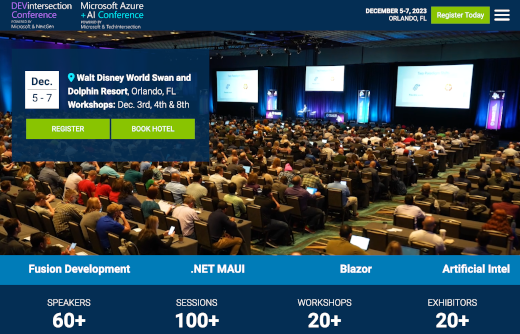Let It Snow THEN Decide If To Close
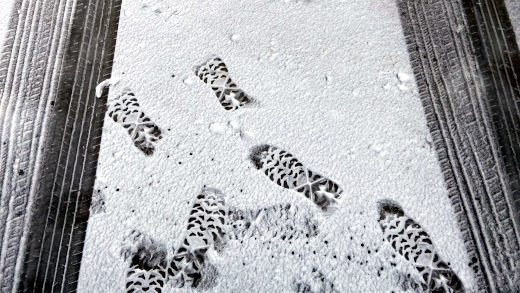
“Oh the weather outside might be frightful,
But the idea of a snow day is so delightful,
And since we don’t know the way the forecast will go,
Let it snow, then decide if to close!”
With no apologies to the late Sammy Cahn, I share with you what has transpired over the last day. Yes, this is part rant and part constructive criticism as well.
Yesterday around 4 pm, I got an alert for my kids’ school system stating that classes would be canceled today due to a looming snow storm. Where I didn’t feel like looking at the forecast myself, some people told me we would be getting a few inches to a foot of snow during what was being called Winter Storm Avree. As the snow was supposed to start overnight and dramatically impact rush hour traffic, school was proactively canceled in the name of safety the day before it was to happen. Canceled not just in my fair town but in a majority of the State of Wisconsin in the US upper Midwest, an area that is not unfamiliar with snow in January.
When I awoke this morning, there were signs that school was certainly canceled. A plethora of dishes and implements from the late-night baking my kids did as they didn’t have to get up early filled the kitchen. However when looking out the window, there was a mere dusting of the white stuff in the street and there were bare spots on the driveway and sidewalk at my home. Way to go Avree.
So much for the snow, and the concerns of safety that compelled government officials to cancel education for a day. As I write this it is over 24 hours from when the cancellation notice was sent, but nothing even close to white-out conditions that would make it unsafe to travel in the morning. Even as it snowed later in the day into the evening, it was certainly navigable out.
Golden Snow Days
The events of the last day are a far cry from what life was for me when I was growing up in the 1970’s and 1980’s. School cancellations would happen in the morning of the school day. Us kids would get up earlier in the morning to huddle by the radio to hear if our school system was cancelled. What was told to me years later by the assistant superintendent was the decision was made early in the morning, considering the forecast and what was happening outside their window, and then phoned into the radio and TV stations along with the secret password so some wiseass wouldn’t just call in a bogus cancellation.
This approach followed me from public schools to even college, as they were slow to never cancelling classes. Where it was always nice to have a day off, the reality was that I was in New England, snow happened in the winter, and we had to deal with it. This was the assumption I had when I moved to Wisconsin, as I previously alluded to.
Today is not Yesterday
So what has changed? Is it the litigious society we live in? Is it a by-product of the recent lockdowns? Is there an assumption that more parent are home (albeit working) so if closing classes are canceled the kids can stay domicile with the parents or families who will already be there? Are we simply not as tough as we used to be? I am sure if I pose this question directly to a school bureaucrat I will be returned with a scripted response laced with safety as the paramount concern, but not acknowledging my reservations for the kids staying home, especially as report after report continues to come forth on the negative impact of school closings over the past few years on kids performance in school.
Somewhere in the middle is a happy medium. But who wants to meet in the middle these days? Fortunately we got enough snow to make a decent snowman as secondary compensation. The primary compensation will be classes in session tomorrow.
Deconstructing Weather Related School Closings
Safety is always a concern in all we do. But the process that goes into determining what is safe or not has to be reviewed to ensure it makes sense, and take into consideration possible collateral damage as a result of any decisions made. The best place for kids to be for learning is in person and all reasonable actions should be made to ensure this happens as much as possible.
This is from The Hot Iron, a journal on business and technology by Mike Maddaloni.
Did you enjoy this? Subscribe to The Hot Iron by RSS/XML feed or Read by Email
Diversions • Strategize • (0) Comments • PermalinkHeading to the Microsoft Azure And AI Conference December 5 – 7
Next week, Tuesday through Thursday, December 5 through 7, 2023, I will be attending the Microsoft Azure and AI Conference in Orlando. Will you be there too?
The conference includes a wide array of presenters from Microsoft and partner firms on leveraging the latest capabilities of Microsoft’s cloud hosting platform Azure as well as artificial intelligence, or AI – the hottest topic out there in the tech world and beyond.
I will be attending with colleagues from work who all work with Azure in different capacities. This collaboration among peers will heighten my learning for certain over the 3-day conference. I am hoping to take away from this tangible ideas and potential projects to meet our team and organizational goals.
If you are attending feel free to connect with me here and comment on this blog post or you can connect with me on LinkedIn and please no spammy sales pitches.
This is from The Hot Iron, a journal on business and technology by Mike Maddaloni.
Did you enjoy this? Subscribe to The Hot Iron by RSS/XML feed or Read by Email
Announcements • Strategize • Technology • (0) Comments • PermalinkLivestreaming Swim Meets – The Latest and Greatest
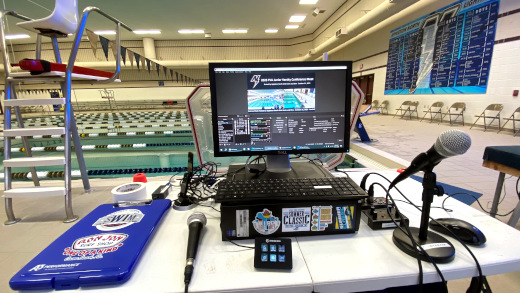
It’s been over a year and a half since I first wrote about the work I and others have done with livestreaming swim meets, and what a time it has been. Since that original post the gear and team has covered over a dozen swim meets to thousands of viewers. Along the way we have made a myriad of improvements to the process and equipment, and I would like to share these as well as what we learned along the way.
Still livestreaming swim meets?
Some reading may be thinking, you’re still livestreaming? Isn’t that a thing of the past? Sure, the efforts started in 2021 was born of necessity, but the demand hasn’t lessened. Where some venue and sports have suspended livestreaming, I and others wholeheartedly disagree. From busy families to distant friends and relatives, the ability to see live action in a quality broadcast persists. Even though there are commercial, automated solutions available where you have to pay to watch a limited-featured broadcast, the emphasis on quality keeps me and the others in our crew doing what we are doing.
The Breakdown
Below I organized the changes and improvements with the software, hardware, audio and content areas of livestreaming. Where the picture above shows our latest configuration, you can watch the culmination of the efforts involved with the latest recorded broadcast of my high school’s hosting of the Junior Varsity Conference swim meet on YouTube.
Software
We are still using OBS Studio and even with the more we have done with it, we are still barely scratching the surface on its capabilities. A combination of built-in features new to us as well as plugins to the platform allowed for ease of management and enhanced capabilities.
We started using Scene Collections for each swim meet and team to better organize them. This allows us to switch between color and scene configurations easily with little required enhancements to them. I say required as many times we are copying scenes from one collection to another due to something new I learned or want to experiment with. For example, I have some collections for a meet with multiple scenes that is manually managed, as well as collection with a single scene for an “autopilot” meet – once I couldn’t be there to direct the meet, so we left a single scene on, and one of the crew started and stopped it for each meet session. The single scene incorporated 2 cameras and the scoreboard, as you can see here:
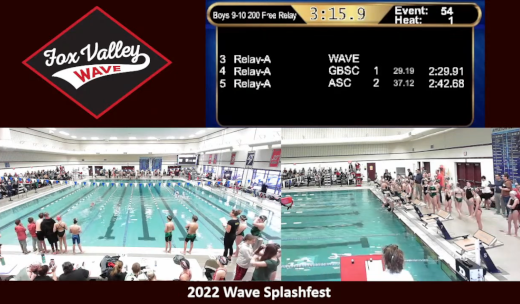
To make the management of scenes easier, I installed the Source Copy plugin for copying and moving scenes between collections. Even if you don’t think you will use this, if you are livestreaming multiple meets or events, you will. Another plug-in we started using was the OBS-NDI v 4.9.2 from dev47apps for NDI cameras and iPhone. This allowed us to use our iPhones as a Web cam, and it was amazingly easy to do so. In addition to the plug-in we installed the NDI HX Camera app on our iPhones. Where the app was a little on the pricey side at US$20, it was worth what we gained in flexibility. As long as the iPhone was on the same network as the OBS computer, we could simply select the NDI source and what was on the phone was in a scene. We experimented with this at our summer meets to get close-up footage of races ending at the far end of the pool as well as a roving camera for awards presentations.
Other enhancements to our livestreams came from learning features in OBS. As our scoreboard was out for a while, we had a need to easily update the current event and heat in the swim meet. We did this with loading the events and heats into a text file with each one on its own line, then used this in a text source to read the first line of the file. When editing the text file to remove the top line, upon saving it the new top line would appear in the scene. Another enhanced use of text was to add a crawler or horizontally-scrolling text on a scene. This tutorial is a good example of how to add a crawler.
Hardware
Although we only made one true addition to our hardware, it was a significant one – an Elgato Stream Deck Mini. A Stream Deck is a device with multiple buttons that can be programmed by accompanying software on the computer to execute any commands, and not just for OBS, but it is very popular among livestreamers. After much deliberation I decided on the Mini with just 6 buttons. Why? There are usually a handful of scenes that are a go-to, and programming them to Stream Deck buttons made scene switching a breeze. And with only 6, sometimes you didn’t even need to look at the buttons to know where which was which. We did program one button to throw up a graphic with no sound as an “oh shit” scene in case we needed to cut away from all cameras.
Another enhancement could fall under hardware, and that was the use of 3M Command strips and hooks. We use the Velcro-like Command strips to mount the cameras, and they stay up with no problems. We also use Command hooks for running cables along the walls. The nice thing about them is that even though they are designed to easily be removed, the strips and hooks have stayed up in the high-humidity environment of a pool for several years now.
Audio
Audio thus far has been an Achilles’ Heel of the broadcasts. The first few meets we livestreamed years ago did not have any audio at all. Where later on we toyed with tapping into the swim meet announcer’s microphone, we decided to add our own audio and do our own play-by-play. We have been lucky to have the announcer we do for the high school girls swim meets, and I have been getting more comfortable with this duty as time goes on, building on my meet announcing experience.
When the mic was off, however, we would not be sending any audio over the livestream. This would throw YouTube warnings we simply ignored. It also made for a poor audio experience to go from dead air to someone’s booming voice. I was able to eliminate the dead air by adding an open source audio file of ambient indoor pool sounds and looping it. There are many out there to choose from, and unfortunately I never saved the source link for the main file I use to share with you. This looping audio allowed for a more overall natural sounding broadcast.
Originally the mic we used was a low-end USB mic, and it did a good job but not a great one. The sound was distorted and even with some adjustments to OBS audio settings there wasn’t much improvement. We then decided to up the game by borrowing a mixer and an XLR microphone. The quality improved but there was static and some distortion I attributed to the audio cable between the mixer and the computer audio input jack. When I decided to try a USB cable I found this refurbished mini USB Pyle mixer for the same price of a cable. Adding 2 Shure PGA48 microphones gave us a dramatically better sounding broadcast, as can be heard in the meet livestream link above.
Content
Building upon bringing in the Web scoreboard mentioned in the last post, I wanted to see if we could bring in what was displayed on the Daktronics scoreboard for high school meets. As I mentioned earlier the scoreboard was out for a few meets, but when it came back a representative from Daktronics was at the meet and I politely cornered him to ask how we could do this. It turns out the scoreboard console generates a Web page with the image of what’s live on the scoreboard. We were able to take the URL of that Web page into a browser source so the entire scoreboard could be in its own scene, as shown here:
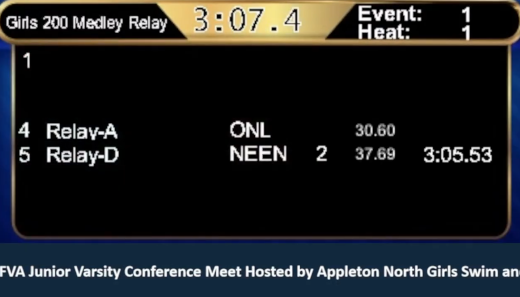
As well, I added a crop of the scoreboard and put it at the top of all scenes so the event, heat, event title and clock was always displayed on all scenes, as shown here:
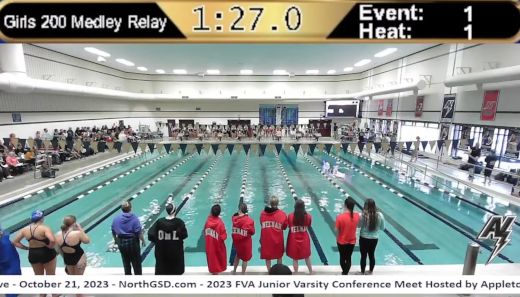
Other content improvements included custom thumbnail images for each meet in YouTube. These were created using GIMP, open-source graphics software comparable to PhotoShop, then taking the image with the meet logo and text and setting it in YouTube Studio for the livestream. I also made a video of the school’s logo and animated text using Canva, a cloud-based, easy to use design platform. Although I only have the free version, I was impressed with how much I could do with it.
So What’s Next?
Where the list of improvements is not only long but game-changing for our livestreams, there still more I want to do. There are many features of OBS I have yet to play with, and if only I had the luxury of time to research and experiment more.
A hold-over from the last post was a pan-tilt-zoom, or PTZ, camera. An example of one is the Move 4K from PTZOptics. A challenge we have is the cameras would be mostly used outdoors or in high-humidity natatoriums. Surprisingly we have had little issues with our ~US$50 Webcams and can afford to have extras. But with prices starting at ten-times that of a standard Webcam, it’s outside of my own budget. To mitigate any issues with the environment, PTZOptics has partnered with a firm to make outdoor camera covers. These are nothing short of amazing, but carry a cost as much as a camera and would add significantly to our load and the logistics of how to mount them as it is huge. All that being said, recently learning about these makes them more within reach.
Deconstructing Livestreaming Improvements
My trajectory for our livestreaming efforts is to make a broadcast that I and others would enjoy watching. Where for years people have – and still do – say what they are looking at is good enough, it is because there is no other option for them. As is clearly stated in the text and pictures here, there’s a better way. With a small investment in time and equipment, a quality livestream experience can become a reality for all.
This is from The Hot Iron, a journal on business and technology by Mike Maddaloni.
Did you enjoy this? Subscribe to The Hot Iron by RSS/XML feed or Read by Email
Strategize • Technology • Thrive • (0) Comments • PermalinkBrowsing What’s Possible
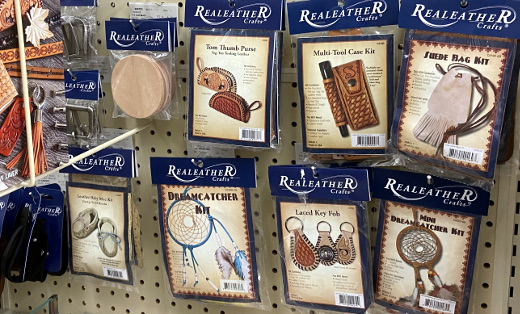
A recent chance visit to a retail store became the catalyst of a serendipitous journey on how I do research into my job and seek information in general.
After dropping off my mobile device to get a new battery installed, I was told it would be ready in an hour. As I don’t wear a watch and my phone is how I know what time it is, I decided to peruse some of the stores along the strip mall, inside at least one I hoped would have a clock to let me know when I could return to the repair shop. At this later hour on a Saturday the only other store open was Hobby Lobby.
I had never been in a Hobby Lobby store before, but I know people who have. Before walking in I assumed it had – wait for it – hobby supplies, but more for crafting. To my surprise I found you could do everything from plan a wedding to decorate for Christmas (ugh, in August) to design clothes to make pinewood derby care like I did in Cub Scouts so long ago. There was a lot more, including the leather craft kits I had as a kid, but I’ll spare you the reader of details of the plethora of supplies available there.
But these were not just supplies. Rather I saw them as ideas – dare I say catalysts – for creating almost anything. Where it was awe inspiring, another way to look at it was overwhelming. As my head was filling with ways to spend lots of money, it was also filling with thoughts of how I work and do research on technology.
Search and Hopefully Seek
Today we don’t browse anymore, instead we search and specifically I am referring to finding information online. We enter in a search phrase or query and hope what is on the resulting page is exactly what we are looking for. In some cases it is, or perhaps are we simply settling for what the search engine returned to us as the best option? Search engine optimization, or SEO, may have been done on some information you are looking for but not all, impacting what is presented to you. Other information that may be a better solution for you may have been relegated to page 6 of the results. Factor in algorithms and paid search engine marketing, or SEM, and search results could be way off from what you seek.
Going into the store was different than had I gone to their Web site. With the former I had plenty of time, was meandering the aisles of the store and making mental notes of what was available. Had I gone to their Web site, which I never had before or since, I likely would have been looking for something specific and certainly would not have seen the wedding accessories and supplies, for example. Not that I am looking to get married again (once was all I needed!), though the awareness of what is available and possible would not be complete for me. But I digress.
Is Too Much a Good Thing?
I didn’t feel blown away after I left the Hobby Lobby store, namely as my recollection of what was there was fairly general. I of course recall some specifics as I mentioned above and others I will again spare you of (did I mention they have model trains too?). As I had time to kill I casually took it all in, for turning down each aisle was literally a new adventure.
However what if it was not so casual, and I was looking for something specific in the store and didn’t have all the time in the world? Upon entering and seeing the wide variety that was mere feet beyond the door, I would have been driven to the customer service desk for the shortest path to what I needed. Even if my request was general (sorry, can’t think of a good crafting idea here) I would have wanted directions to the area or areas of the store with surgical precision.
We do this today and I will admit to it. We are often too focused on what we are looking for and want the best answer in haste. I take shortcuts too – I typically use Presearch as my primary search, but if I am in a hurry and want the “best” option I will often go right to Google, enhanced tracking of me be damned as well as the spoils to those who invest in SEO and SEM.
Another area we encounter this is with software features – you have heard of the 80/20 rule, right? This is where 80% of the people will use 20% of the features. At this point we don’t even know every feature of, say, Microsoft Word. I know in writing this post I am maybe using a handful of “features” such as spellcheck and headings, and I wouldn’t even know where to find a comprehensive list or what is new in the next version of Word I keep getting prompted to install. On a larger scale I encounter this at work where when we upgrade to a new version of the software for the program I lead we need to scour very technical documentation for the nuggets of information we need to translate to our very non-technical users.
Deconstructing the need to explore
Back at Hobby Lobby, among the myriad of products I discovered one item that was not readily available was a working, accurate wall clock. When I got through the checkout with the few things I had – I resisted the urge to buy the whole store and only selected a few greeting cards – my receipt showed I was there well over an hour, and cutting it close to pick-up my phone before the repair shop closed. After securing my device, I pondered my last hour so on the ride home. I believe things happen for a reason, and I include this experience as well. In this case the reason was that I needed this timeout to explore something new, to remind me to get back to tapping into my curiosity to truly seek what’s out there to come up with what’s truly possible.
This is from The Hot Iron, a journal on business and technology by Mike Maddaloni.
Did you enjoy this? Subscribe to The Hot Iron by RSS/XML feed or Read by Email
Strategize • Thrive • (0) Comments • PermalinkGood And Great

It’s been nearly 20 years since I took the Intro to Improv program at The Second City in Chicago, and nearly three-quarters of that time since I have performed with an improv troupe. Yet not a week goes by where I am recalling or leveraging something I learned or experienced from those days. Where I feel I haven’t done justice to writing about that intensely creative time in my life, allow me to share some advice that has stuck with me from then to today.
One of my instructors was Nick Johne, a veteran of The Second City main stage in Toronto (for those who don’t know the term main stage refers to the top improv troupe that performs on a theater’s main stage). My troupe was thrilled to have someone of his caliber to teach us, despite the fact that he could never remember any of our names. This was a minor detail, as he was a fountain of knowledge.
There were a couple of sayings he used during class. And they were truly expressions, as it was not just his words but his overall physicality that accompanied what he said that guided us. During a class we would do multiple scenes, mixing students throughout the session. After one scene, a fellow student said that something they did was bad. This was immediately dismissed by Nick, when he said (and of course I am paraphrasing but tightly), “there’s no such thing as bad or good in improv, there’s ‘good’ and ‘great.’” He elaborated that when someone performs, there is thought and effort involved and as a result it could not be “bad.” He instead called that “good.” On the flipside of good is “great,” where if what was performed was superior and to the point where Nick could “watch it all day” (another expression of his).
Not bad and good, but good and great.
This mindset has stuck with me over the years, and I think about it often in my personal and work life. We are often our own worst critics and I am no exception to that. Maybe by framing something as good but not great will help us the next time we do whatever it is we are being hard on ourselves over? As a way of motivating others around us, we can “yes, and” and say what they did was “good,” and here’s how we could make it “great.” Advice on making is great was something Nick would follow-up with when saying what we did was good.
In the case of improv, the response of good and great is almost instantaneous. Whether a teacher saying it or an audience audibly reacting to it. However we often don’t get feedback on what we do outside of the improv world that soon – if ever, and if so, sincerely. For ourselves and for others, we may have to be a little intensely retrospective to find what was good and great, as our first inclination may be what was bad and good.
Years later my wife and I went to a show on one of smaller The Second City stages in Chicago and there performing in the ensemble was Nick. She suggested that when I go up to him after the show and congratulate him on it – a common thing to do to actors and improvisors following a performance – I should mention I was one of his students years earlier. Where I did compliment him after the show, I didn’t add the second part of her suggestion, as I am sure he wouldn’t remember me.
Deconstructing Good and Great
So the next time someone asks you how your day was, and if it may not have been up to even your lowest expectations, respond that it was good. But not great, and that you hope tomorrow is a great day. It could be the beginning of an attitude change. I know that is my hope in doing so myself.
This is from The Hot Iron, a journal on business and technology by Mike Maddaloni.
Did you enjoy this? Subscribe to The Hot Iron by RSS/XML feed or Read by Email
Strategize • (0) Comments • Permalink
